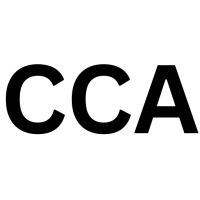Summary
Cut through the green tape
We don't push agendas. At Net Zero Compare, we cut through the hype and fear to deliver the straightforward facts you need for making informed decisions on green products and services. Whether motivated by compliance, customer demands, or a real passion for the environment, you’re welcome here. We provide reliable information—why you seek it is not our concern.
Details
- The United States of America
U.S. manufacturers and importers in high-emission sectors, including fossil fuels, refined petroleum, cement, iron, steel, aluminum, and chemicals.
Deep dive
Background
The Clean Competition Act (CCA), introduced in 2022, represents a significant step in U.S. efforts to decarbonize domestic manufacturing and align with global climate goals. As an amendment to the Internal Revenue Code of 1986, the CCA builds on existing U.S. regulations, notably the Environmental Protection Agency’s (EPA) Greenhouse Gas Reporting Program (GHGRP). The CCA aligns with broader U.S. climate policy—complementing the Clean Air Act’s emissions standards and the Inflation Reduction Act’s funding program—by incentivizing decarbonization in both domestic manufacturing and trade policy through a carbon border adjustment mechanism. Inspired by the European Union's CBAM, the CCA bridges industrial competitiveness and environmental accountability in the U.S.
Reporting Requirements
At the core of the CCA is a robust emissions reporting regime: covered entities must submit itemized greenhouse gas (GHG) emission data for each eligible facility. These reports must include all data required under the GHGRP—covering total GHG emissions in CO₂-equivalent, electricity usage broken down by grid vs. self-generated, and emissions linked to non‑grid electricity. They must also report production volumes (in tons) of each primary good at each facility. While the focus is on GHGs, reporting also includes product weight and electricity consumption—integrating environmental transparency across emissions, energy use, and production metrics. The CCA thus supplements existing disclosure frameworks like those under the GHGRP.
Penalties for Noncompliance
The CCA does not specify fines or penalties directly tied to emissions reporting failures by covered entities. Nevertheless, non‑reporting of emissions or inaccurate submissions could lead to enforcement action by the EPA.
Current Status
As of June 2025, the Clean Competition Act remains pending in Congress, actively under committee review but not yet enacted into law. S. 3422 was introduced in the Senate on December 6, 2023, and currently holds “Introduced” status with no legislative passage. Its provisions — including annual carbon-intensity reporting, a carbon border adjustment fee, and rebate mechanisms — are clearly outlined in the bill text, but there is no implementation date posted because it has not cleared committee stages.


